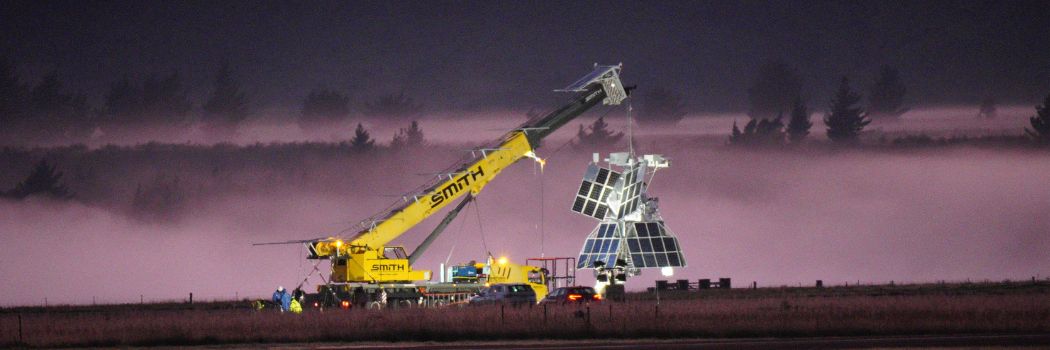
An international project involving Durham University which flew a gigantic balloon-borne telescope to the edge of space has made the front cover of the prestigious journal Nature Astronomy.
Our astronomers are part of the team behind the Superpressure Balloon-borne Imaging Telescope (SuperBIT).
Helium balloon
Writing in Nature Astronomy the research team has set out how the 0.5 metre, two tonne SuperBIT telescope was lifted to the stratosphere by a helium balloon the size of a small stadium in April last year.
SuperBIT circumnavigated the globe five times in 40 days, and obtained high-resolution, diffraction-limited optical and near-ultraviolet imaging from above 99.5 per cent of Earth's atmosphere.
It returned stunning images of space including the Tarantula Nebula - a neighbourhood of the Large Magellanic Cloud where new stars are being born - and the collision between the Antennae galaxies.
Dark matter
SuperBIT also mapped the distribution of dark matter in 30 pairs of colliding galaxy clusters, selected during the flight by autonomous software.
Durham's Institute for Computational Cosmology has now predicted the appearance of those galaxy clusters, with a variety of different candidates for dark matter.
Comparing simulated and real observations will tell the researchers what real dark matter is made from. Their analysis is under way.
GigaBIT telescope
SuperBIT takes high-resolution images like those of the Hubble Space Telescope, but with a wider field of view.
Funding has already been secured for the 1.4 m GigaBIT telescope, which will improve on SuperBIT's sensitivity and resolution.






